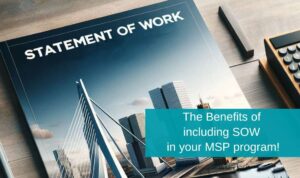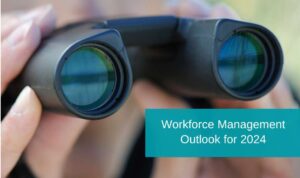Is your workforce future-proof?
Multiple researches show us that roles and jobs as we currently know them will no longer exist in the future. Some say that in 10 years time 85% of the jobs we have today won’t exist anymore. Others predict that it is closer to 50%. The future will tell…
Everybody agrees on one topic: the impact of Artificial Intelligence. Robotics and the change in products and service offerings companies plan for, will impact the workforce significantly. Living in a world of scarcity and challenging recruitment objectives we tend to focus on what we need tomorrow. That is definitely relevant, but we also need to start acting on the transformation of our current workforce to future needs.
Alignment with business strategy
It is important to have a strategy and a plan when it comes to future-proofing your workforce. But even when a company’s strategy is clear in its ambition, the fact that you don’t know exactly how and when change will come is challenging. So, aligning and embedding the workforce strategy with the company’s strategy is the first step to take, but in the meantime you need to make sure that there is enough room to manoeuvre when timing or developments are taking you in another direction.
What does my workforce look like?
Once alignment with the business strategy is secured and has the right focus, the next step is mapping the workforce based on competencies and skills with an eye to future. Getting a strong data driven insight on what people have to offer without creating an atmosphere of reorganisation might be a critical step. No one wants to see their talent leave to join the competition as a result of disturbance and noise in their organisation. Traditional performance reviews or team assessments aren’t sufficient, as they are not objective and by definition look at the status quo and not at the future situation/needs/models. Rethinking these parameters is definitely worth considering, especially since this needs to be an ongoing process.
As the contingent workforce is of increasing importance to almost every company, it makes sense to take this population into account as well. Not only from a talent perspective. Comparing what the current contingent workforce provides today and what the company needs in the future, will help to manage and steer the supply chain so they can be future-proof too. Furthermore, it will help decide on where to source which role in the future.
Objectified insight in the workforce helps on 2 levels:
- On organisational level it becomes clear which domains of competencies are (over)represented and which are not at the required level. In relation to future needs it will help to determine how big the effort will be to transform.
- On individual level, it will help the workforce in making the right choices in job opportunities, learning and development and career development to remain of value. This way workers become part of the transformation too.
Again, this applies to both perm and contingent workforce. So in order to facilitate the transformation, companies could consider a perm and contingent internal marketplace. It will contribute to an open ecosystem where people can develop towards future needs. The company can leverage from experience, cultural and company knowledge and tenure increases for those who are relevant. And it suits an ever changing environment perfectly.
The learning continues
We can conclude that reskilling or upskilling on itself isn’t enough. However, a strong Learning and Development structure is of critical importance. In line with the future ambitions of the organisation L&D need to deliver what is required to support employees in their continuous learning journey. Especially if a transformation is taking place over a longer period of time. Dealing with changing demand will be key for L&D managers moving forward.
Talent Acquisition
Needless to say that in all this change, talent acquisition and recruitment departments will remain critical to direct, support and onboard the right (future) talent, both internal and external. Insights in the current workforce, where the workforce is moving to in terms of skills and competencies, how the contingent domain is evolving and how L&D can support is a crucial insight to building (future) sourcing strategies. Running an effective future recruitment model requires an integrated approach with all workforce related initiatives to get the best results.
All of this might seem easy to put on paper but a challenge to start and execute without the right sponsorship, resources, knowledge and time. It is however not a choice for many companies, it’s a must. And if that is the case, better start sooner rather than later!
 About the author
About the author
Eugene van Berkel is Managing Partner at TalentIn. With his expertise he helps organisations build and execute their workforce strategy, making sure that what is designed can be implemented.
TalentIn has extensive national and international experience in developing and improving strategies for the recruitment of your permanent and temporary staff. We know how these programmes can be designed and implemented successfully. We advise, but can also provide practical support. Are you interested? Please contact us for an appointment without obligation via www.talentin.eu, info@talentin.eu or +31 10 307 54 22





